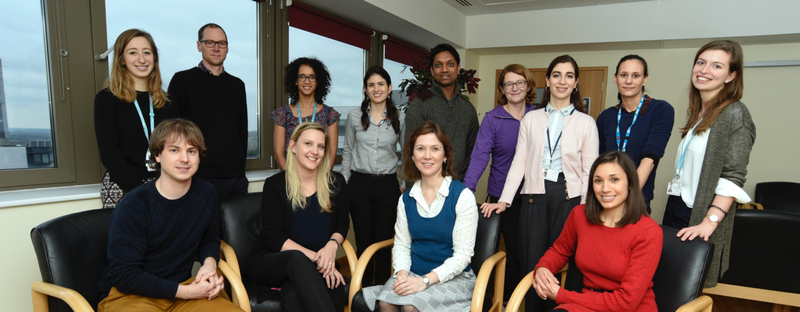
Professor Rebeccah Slater
Biography
Professor Rebeccah Slater is a Senior Wellcome Trust Research Fellow and Professor of Paediatric Neuroscience. She holds a Statutory Chair in Paediatric Neuroimaging in the Department of Paediatrics at the University of Oxford. Rebeccah studied Physics (BSc) at Imperial College and Neuroscience (MSc) at UCL, and in 2007 was awarded her PhD at UCL under the supervision of Professor Maria Fitzgerald FRS. Since 2013 she has led the Paediatric Neuroimaging Group, which focuses on understanding the mechanisms that underlie the development of pain perception in the human infant.
Background
My interest in how children develop began early – I did a GCSE in Child Development! My first degree was in Physics, where I quickly became interested in biophysics of nerve cells. I was fascinated by how information in our environment is processed by our brain. I wanted to do a Neuroscience PhD but first decided to complete a Masters in Neuroscience at UCL. I worked at the Institute of Child Health, and my physics background combined with my curiosity about child development led me to develop my interest in paediatric brain imaging.
During my PhD I made the first observations that changes in brain activity can be measured in newborn and prematurely-born infants during painful medically-required procedures. I now work with a team of scientists, engineers, doctors and nurses who use brain imaging techniques to help us improve our understanding of the development of pain perception and to provide better treatment options for children.
Infant pain research generates immense public interest and challenges medical assumptions. In collaboration with the Wellcome Trust I have created a comprehensive public engagement and scientific communication programme. Watch some of our videos to learn about our work. https://neuroimaging.paediatrics.ox.ac.uk/public-engagement
Teaching
I love teaching. Students so often ask questions that challenge the way I think about science and medicine. My research provides an interface between making new scientific discoveries and providing better clinical treatment for infants receiving medical care. My undergraduate teaching experience includes biomedical science and medicine; additionally, there are many research opportunities in my lab, based in the neonatal unit at the John Radcliffe Hospital.

Selected publications
Gursul, Goksan, Hartley,Mellado, Moultrie, Hoskin, Adams, Hathway, Walker, McGlone, Slater. Stroking modulates noxious-evoked brain activity in human infants. Current Biology (2018)
Hartley, Duff, Green, SchmidtMellado, Worley, Rogers, Slater. Nociceptive brain activity as a measure of analgesic efficacy in infants. Science Translational Medicine (2017)
Research Interests
My major research-related contribution has been to develop our understanding of pain in the human infant, by combining clinical neuroscience with sophisticated mathematical approaches. Until relatively recently, the field was characterised by outdated dogma (based on a misplaced historical perspective that infants may not be able to feel pain), and most high-quality mechanistic work was carried out in the rodent. I developed the methodology to measure pain-related brain activity in the human infant, first using near-infrared spectroscopy and then more directly using electroencephalography. This demonstrated that nociceptive information is transmitted to the infant brain even in the most premature infants, and that this activity can be measured and quantified. I have used these methods to enhance our mechanistic understanding of the development of pain-related central nervous system activity.
In collaboration with the Wellcome Centre for Integrative Neuroimaging, I developed magnetic resonance imaging methods to measure pain-related brain activity in the infant. Using these methods, I have shown that patterns of evoked activity are remarkably similar to adults, with brain areas associated with emotional aspects of pain also active in infants, challenging existing assumptions and putting current pain management practices in the public spotlight. I have now developed a signature of noxious-evoked brain activity that is sensitive to analgesic administration and validated in premature infants, and run a clinical trial on the analgesic efficacy and safety of morphine (Lancet, 2018).